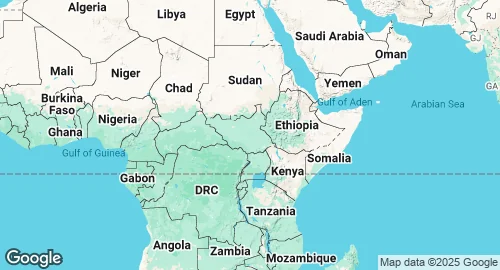South Sudan Military Forces 🇸🇸
Military Strength Overview
| 🛩️ Air Force | 20 active aircraft |
| 🪖 Active Troops | 185,000 personnels |
Defense Statistics & Key Metrics
| Population | 11.5 million (2023) |
| GDP | $12.0 billion (2015) |
| GDP per capita | $1045 (2023) |
| Military Budget | $2.0 billion (2024) |
| Share of GDP in Milex | 2.0% (2024) |
| Share of Govt Expenditures | 8.2% (2024) |
| Military spends per capita | $172 (2024) |
| Inflation Rate | 2.38% (2023) |
| Military Personnel | 53,000 (2020) |
Strategic Overview in 2025
South Sudan's military, the South Sudan People's Defence Forces (SSPDF), is a large and battle-hardened but deeply fractured entity, primarily oriented towards internal security and regime survival rather than conventional warfare. Its strategic position is precarious, defined by internal conflict, ethnic divisions, and the escalating instability in the wider region. The nation's military strength is not a tool of regional power projection but a key determinant in the ongoing and bloody contest for control of the state itself. The country has been in a state of civil war or severe instability for most of its existence, both before and after independence in 2011.
Military Forces: A Fragmented Command
The SSPDF is estimated to have between 150,000 and 200,000 active personnel, making it a numerically significant force. This includes ground forces, a small air force, air defense units, and a presidential guard. The command structure, however, is compromised by the incomplete and stalled implementation of peace agreements. The 2018 peace deal called for the integration of various armed factions, including the Sudan People's Liberation Movement-in-Opposition (SPLM-IO), into a unified national army. This process has largely failed, and the SSPDF remains aligned with President Salva Kiir, while rival forces maintain their own command structures, often along ethnic lines. The military is plagued by logistical shortfalls, including a lack of basic equipment and hardware. A UN arms embargo, in place for several years, has further constrained its ability to procure modern weaponry. The SSPDF's inventory is largely composed of aging, Soviet-era equipment. The air force is modest, with a small number of transport and utility helicopters, such as the Mi-17, and a few fixed-wing aircraft. There is no significant domestic defense industry.
Strategic Trends: Internal Strife and Regional Entanglements
The foremost strategic trend for South Sudan is the high probability of a return to full-scale civil war. The conflict is a complex web of political rivalries, ethnic tensions, and competition for control of the country's oil resources. The war in neighboring Sudan has had a significant destabilizing effect, with an influx of refugees and weapons, and both warring Sudanese factions recruiting from South Sudanese communities. This has turned South Sudan into an arena for regional power plays, with countries like Uganda and the United Arab Emirates supporting different factions to further their own geopolitical interests. This external involvement deepens the internal divisions and complicates any potential peace process. The persistent internal conflict prevents the SSPDF from developing into a professional, national military, instead perpetuating its role as a key actor in a devastating internal power struggle.
South Sudanese Military Budget History
Population and Military Personnel Trends
GDP and Inflation Rate Trends
Military Expenditure: SIPRI Milex.
